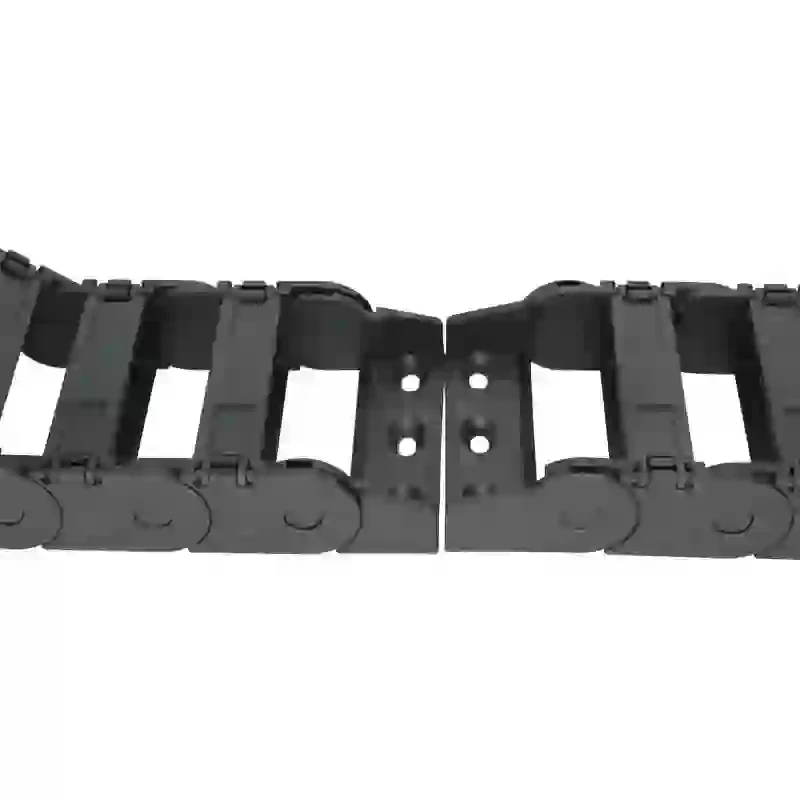cable carrier for hoist
Cable Carrier for Hoist Systems An Essential Component in Modern Lifting
In the fast-evolving world of machinery and construction, efficiency and safety are paramount. One of the critical components that enhance these elements in hoist systems is the cable carrier. This innovative accessory plays a significant role in managing the cables used in lifting operations, ensuring that they remain organized, protected, and functional under various conditions.
What is a Cable Carrier?
A cable carrier, often referred to as a drag chain, is an engineering device designed to guide and protect moving cables and hoses. Typically made from durable materials such as plastic, steel, or aluminum, cable carriers facilitate smooth movement, reduce wear and tear on cables, and prevent tangling. In hoisting systems, these carriers ensure that the lifting cables remain in optimal condition while allowing for uninterrupted movement as the hoist operates.
Importance of Cable Carriers in Hoist Systems
1. Protecting Cables One of the primary functions of a cable carrier is to keep the cables safe from external damage. In a hoisting environment, where heavy loads are frequently lifted, cables are at risk of being pinched, crushed, or exposed to environmental factors like water, dust, and chemical spills. Cable carriers effectively shield these essential components, thus extending their lifespan and maintaining safety.
2. Organized Cable Management Hoists often involve multiple cables that need to be precisely managed. Without proper organization, cables can become easily tangled, creating hazardous situations and operational inefficiencies. A cable carrier neatly houses these cables, allowing for systematic arrangement and reducing the risk of accidents during operation. This organized layout not only helps in maintaining a clean workspace but also aids in efficient troubleshooting and maintenance.
3. Enhanced Mobility Hoisting applications frequently involve vertical and horizontal movements. Cable carriers are designed to accommodate this dynamic motion, ensuring that cables can flex and move without restriction. This flexibility is crucial in maximizing the hoist's range of operation while minimizing strain on the cables themselves. In turn, this leads to smoother operations and less downtime.
4. Reducing Maintenance Needs By protecting the cables and organizing them effectively, cable carriers significantly reduce the need for frequent maintenance. Regular wear and tear on cables could lead to costly repairs and replacements, but with cable carriers in place, the chances of damage are greatly diminished. This not only saves costs but also enhances the overall operational efficiency of the hoisting system.
cable carrier for hoist

5. Safety Enhancements Safety is a critical consideration in any lifting operation. Faulty or damaged cables can lead to catastrophic accidents. Using cable carriers minimizes the risk of cable failure by keeping them protected and secure, which enhances the overall safety of the lift. For operators and personnel in the surrounding area, this added layer of protection is invaluable.
Types of Cable Carriers
There are various types of cable carriers suitable for hoist systems, each designed for specific applications. Some common types include
- Plastic Cable Carriers Lightweight and resistant to corrosion, they are often used in environments where weight matters, such as overhead cranes.
- Steel Cable Carriers These carriers offer enhanced durability and strength, making them ideal for heavy-duty applications.
- Aluminum Cable Carriers These provide excellent corrosion resistance combined with strength, making them suitable for both outdoor and industrial use.
Conclusion
In conclusion, cable carriers are an indispensable component of hoist systems, significantly contributing to operational efficiency, safety, and equipment longevity. By providing organized cable management, protection from damage, and facilitating smooth movement, these carriers enhance the overall functionality of lifting operations. As industries continue to demand more reliable and safe lifting solutions, the importance of integrating effective cable carriers into hoist systems will undoubtedly grow, marking a pivotal step in the modernization of lifting technologies. Ultimately, investing in quality cable carriers is investing in the future of safe and efficient industrial operations.








